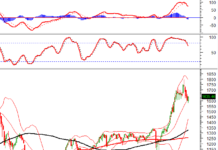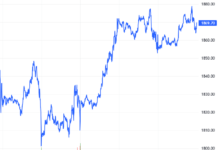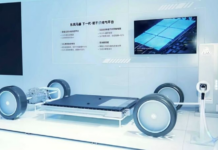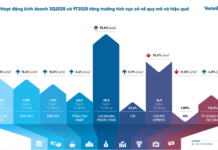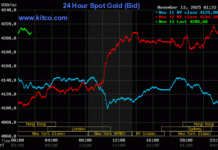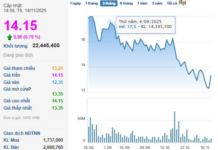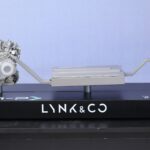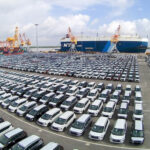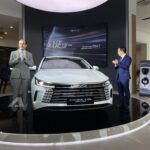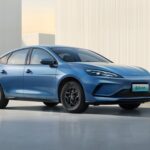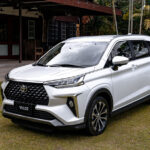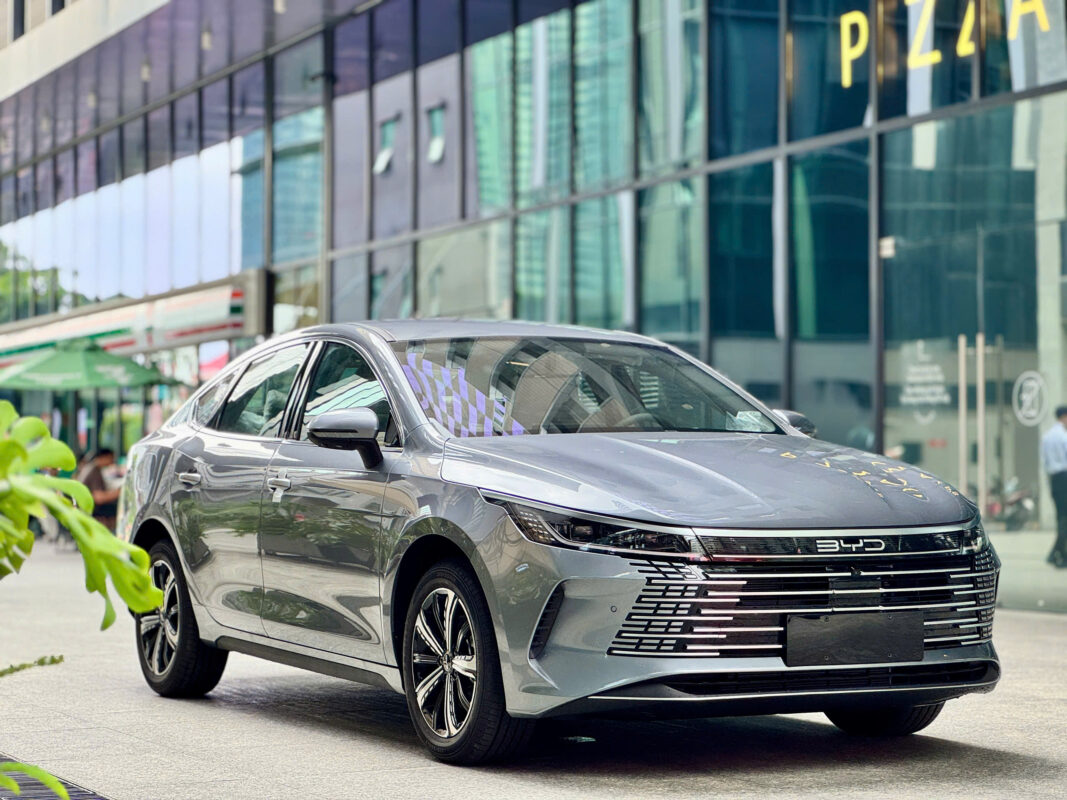
The BYD Seal 5: A New Contender in the C-Segment Sedan Market.
Competitive Edge Lies in Hybrid Powertrain
Vietnam’s C-segment sedan market has long been dominated by established names like the Toyota Corolla Altis, Mazda3, Honda Civic, Hyundai Elantra, and Kia K3, with no new entrants in recent years. The arrival of the BYD Seal 5, a plug-in hybrid sedan, is expected to inject fresh energy into this slowing segment.
Priced at 696 million VND, the Seal 5 positions itself as a bold newcomer ready to challenge formidable Japanese and Korean competitors, while also testing Vietnamese consumers’ perceptions of Chinese vehicles.
With dimensions of 4,780 mm in length and a 2,718 mm wheelbase, the Seal 5 surpasses most rivals like the Civic and Mazda3 in size. This advantage translates to a spacious cabin and a “larger car” feel for its price point.

Illustration of BYD’s DM-i Super Hybrid Technology
The BYD Seal 5 is powered by the DM-i Super Hybrid system, touted by the Chinese automaker as its “ace in the hole.” This powertrain combines a 1.5L gasoline engine with an electric motor, delivering a total output of approximately 209 horsepower and 300 Nm of torque. In pure electric mode, the Seal 5 can travel up to 120 km.
When both power sources are utilized, the total range on a single fuel fill-up can reach around 1,200 km, with a fuel efficiency of just 3.8 L/100 km under standard conditions.
Compared to segment competitors like the Toyota Altis HEV (122 hp), Honda Civic eHEV (200 hp), and Hyundai Elantra N-line (204 hp), the Seal 5’s performance metrics are clearly superior. This makes it an attractive option for buyers seeking an eco-friendly, fuel-efficient vehicle without compromising on versatility for long-distance travel.
Modern Design: A Double-Edged Sword?
The Seal 5’s exterior design reflects BYD’s new aesthetic, featuring slim LED headlights, a seamless rear light bar, and a nearly enclosed grille—creating a modern, electric-vehicle-inspired look. Many observers find this style more eye-catching than traditional sedans in the same class.
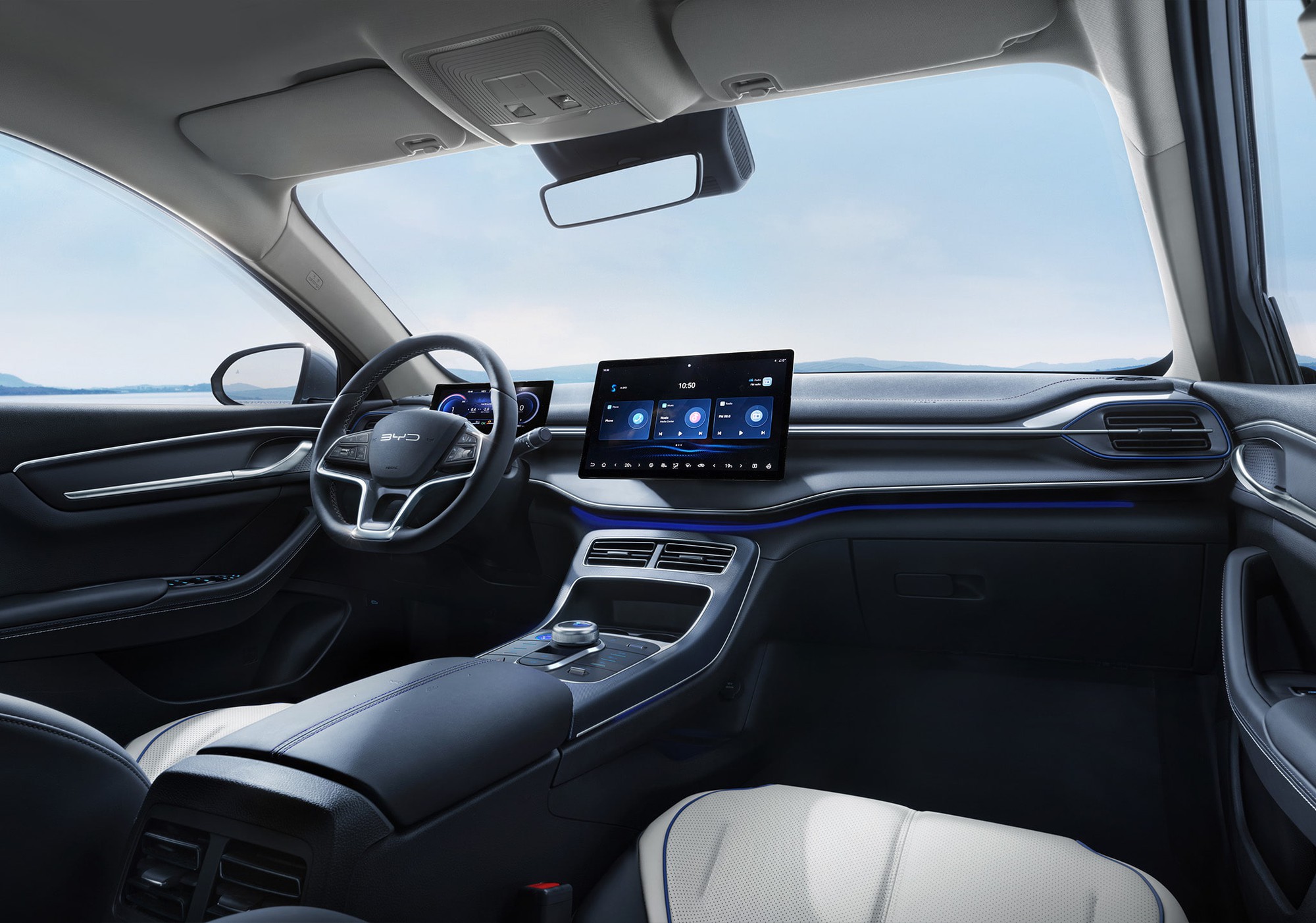
The Modern Interior of the BYD Seal 5
Inside, the Seal 5 impresses with a 12.8-inch rotating central screen, an 8.8-inch digital instrument cluster, leather seats, wireless charging, and a PM2.5 air filtration system. It also includes a 360-degree camera, 6 airbags, and essential safety features. For the average consumer, this is a solid feature set for a vehicle under 700 million VND.
Despite its impressive technology and specifications, the BYD Seal 5 faces a significant challenge: Vietnamese consumers’ trust in Chinese vehicles. This skepticism is particularly pronounced in the sedan segment, where durability, resale value, and after-sales service are highly valued—areas where Japanese and Korean brands have built strong reputations over decades.
Additionally, offering only a single variant priced similarly to higher-tier versions of the Civic or Mazda3 limits the Seal 5’s appeal to cost-sensitive buyers. Moreover, as a new model, the dealership network, spare parts availability, and technical expertise for plug-in hybrids are still under development, which may deter long-term ownership confidence.
There’s no denying that BYD’s entry is strategically calculated. While most competitors remain loyal to gasoline engines, the Seal 5 offers a plug-in hybrid experience with fuel efficiency, smooth operation, and environmental friendliness. For tech-savvy buyers, it’s a distinctive option worth considering.
However, for the Seal 5 to truly establish itself, BYD needs more than impressive specs. They must demonstrate durability, service quality, and commitment to Vietnamese customers over time.
At present, the Seal 5 may not yet pose a direct threat to the Civic or Mazda3, but it has undeniably introduced fresh momentum, forcing traditional rivals to reevaluate their strategies as the sedan segment transitions toward electrification.
Chinese Car Imports to Vietnam Surge Significantly
The Vietnamese automotive market has witnessed a notable shift in the first nine months of this year, marked by a significant surge in import trends. Particularly striking is the unexpected rise of Chinese-origin vehicles in the truck and specialized vehicle segments.
Toyota Veloz Cross Unveils New Hybrid Variant with Sport Package: Fuel-Efficient Option for Service Professionals, Potentially Arriving in Vietnam to Rival Xpander
The Toyota Veloz Cross hybrid is reportedly in its final stages of preparation for launch in Indonesia, with potential plans for a Vietnamese debut in the near future.

